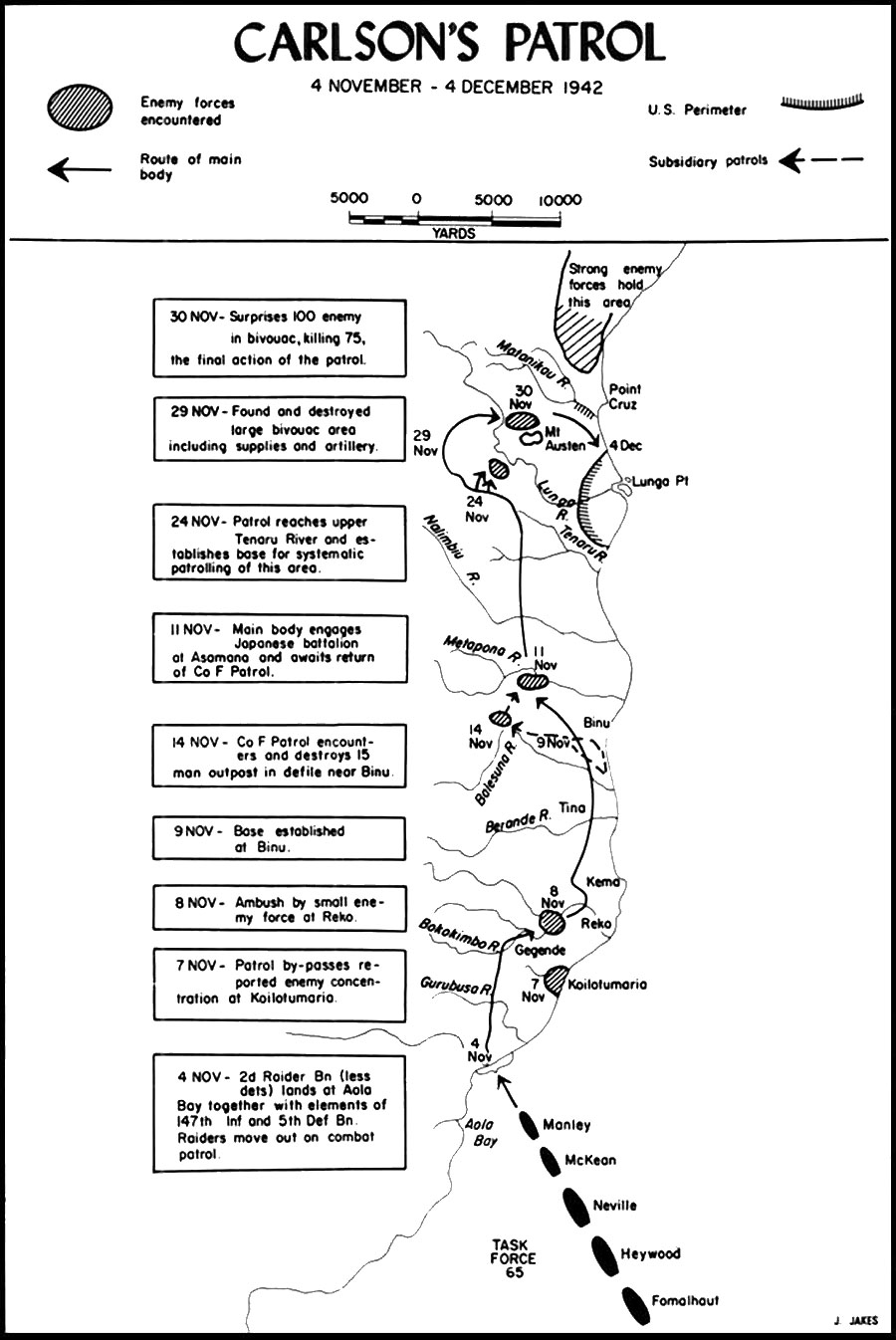
Today marks the 72 Anniversary of Guadalcanal.
Yesterday, I asked a young man in his twenties if he knew about Guadalcanal. He cheerfully answered, " That was dug by FDR in order to connect the Atlantic to the Pacific."
Okay. I kept my trap shut other than saying, " No, that was the Panama Canal and it was dug at the order of President Teddy Roosevelt -FDR's cousin."
He did not ask for correction.
I was glad that the young man did not answer that it was ditch dug in Egypt.
Guadalcanal was an epic battle fought during the Second World War. Two graduates of the Leo High School were killed hours apart in one of the Guadalcanal Campaign's hundreds of bloody skirmishes: Joe Auman, Leo Class of 1940 and Larry Spillan Leo Class of 1941. Both young men were members of Carlson's Raiders and had taken part in the raid on Makin Atoll*.
 Now, on Guadalcanal they participated in a long-march raid behind Japanese lines in order to harrass and terrorize the vastly superior enemy.
Now, on Guadalcanal they participated in a long-march raid behind Japanese lines in order to harrass and terrorize the vastly superior enemy.Larry Spillan was killed outright when he took point in an attack on enemy positions. The Japanese counterattacked and Joe Auman held off waves of attackers with his machine gun, while his company withdrew.
The President of the United States of America takes pride in presenting the Navy Cross (Posthumously) to Private Joseph M. Auman (MCSN: 293089), United States Marine Corps, for extraordinary heroism and devotion to duty while serving with Company E, SECOND Marine Raider Battalion during an engagement with the enemy Japanese forces at Asamana, Guadalcanal, Solomon Islands, on 11 November 1942. When his company was forced by overwhelming enemy fire to make a temporary withdrawal, Private Auman, with utter disregard for his own personal safety, manned a machine gun and covered the retirement. Steadfastly remaining at his exposed position, he continued to fire his gun until killed by the enemy. His dauntless courage and outstanding devotion to duty were in keeping with the highest traditions of the United States Naval Service. He gallantly gave up his life in the defense of his country.
General Orders: Authority: Board of Awards: Serial 0478 (May 3, 1943) -Action Date: 11-Nov-42; Service: Marine Corps; Rank: Private;Company: Company E;Battalion: 2d Marine Raider Battalion (Emphasis my own.)
* a Respolution by the State of Illinois incorrectly notes that Spillan and Auman were killed during the Makin Raid.




.jpg)








